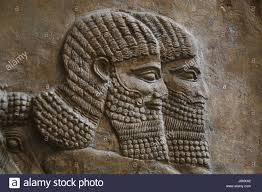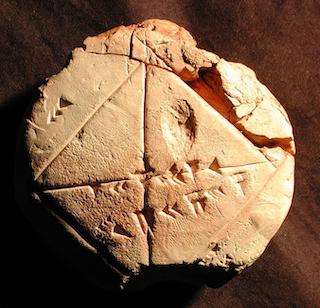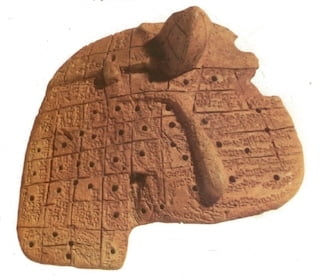 This is some spooky stuff You’re telling me.
This is some spooky stuff You’re telling me.
But I got it now, as long as I hang with You and no other want-a-be gods I’m okay.
Moses explained that he was 120 years old and was soon to die. He also told them what God had said to him:

“…Thou shalt not go over this Jordan.
The LORD thy God, he will go over before thee, and he will destroy these nations from before thee, and thou shalt possess them: and Joshua, he shall go over before thee, as the LORD hath said” (Deut 31:2-3).
“Be strong and of a good courage, fear not, nor be afraid of them: for the LORD thy God, he it is that doth go with thee; he will not fail thee, nor forsake thee.
And Moses called unto Joshua, and said unto him in the sight of all Israel, Be strong and of a good courage: for thou must go with this people unto the land which the LORD hath sworn unto their fathers to give them; and thou shalt cause them to inherit it” (Deut 31:6-7).
“And the LORD, he it is that doth go before thee; he will be with thee, he will not fail thee, neither forsake thee: fear not, neither be dismayed” (Deut 31:8).
Moses then wrote down the laws and gave them to the priests, the sons of Levi that carried the ark of the covenant.

This monument shows the king worshiping the major gods in symbolic form, including Šamaš, whose symbol is the winged disc.
“And the LORD said unto Moses, Behold, thy day’s approach that thou must die: call Joshua, and present yourselves in the tabernacle of the congregation, that I may give him a charge. And Moses and Joshua went, and presented themselves in the tabernacle of the congregation.
And the LORD appeared in the tabernacle in a pillar of a cloud: and the pillar of the cloud stood over the door of the tabernacle.
And the LORD said unto Moses, Behold, thou shalt sleep with thy fathers; and this people will rise up, and go a whoring after the gods of the strangers of the land, whither they go to be among them, and will forsake me, and break my covenant which I have made with them.
Then my anger shall be kindled against them in that day, and I will forsake them, and I will hide my face from them, and they shall be devoured, and many evils and troubles shall befall them; so that they will say in that day, Are not these evils come upon us, because our God is not among us?

Šamaš sits in the E-babbar shrine and holds the rod and ring symbols of powerful kingship.
Limestone tablet depicting king Nabu-aplu-iddina being led into the presence of Šamaš, the sun god; 860 B.C.-850 B.C.
Šamaš sits in the E-babbar shrine and holds the rod and ring symbols of powerful kingship.
And I will surely hide my face in that day for all the evils which they shall have wrought, in that they are turned unto other gods” (Deut 31:14-18).
If you willfully sin God doesn’t hear your prayers,
“Behold, the Lord‘s hand is not shortened, that it cannot save; neither his ear heavy, that it cannot hear:
But your iniquities have separated between you and your God, and your sins have hid his face from you, that he will not hear” (Is 59:1-2).
“Take this book of the law, and put it in the side of the ark of the covenant of the LORD your God, that it may be there for a witness against thee.

Adad in Akkadian and Ishkur in Sumerian and Hadad in Aramaic are the names of the storm-god in the Babylonian-Assyrian pantheon.
All three are usually written by the logogram dIM.
The Akkadian god Adad is cognate in name and functions with northwest Semitic god Hadad.
In Akkadian, Adad is also known as Ramman (“Thunderer”) cognate with Aramaic Rimmon which was a byname of the Aramaic Hadad.
Ramman was formerly incorrectly taken by many scholars to be an independent Babylonian god later identified with the Amorite god Hadad.
Assyrian soldiers carrying a statue of Adad
Adad in Akkadian and Ishkur in Sumerian and Hadad in Aramaic are the names of the storm-god in the Babylonian-Assyrian pantheon.
All three are usually written by the logogram dIM.
The Akkadian god Adad is cognate in name and functions with northwest Semitic god Hadad.
In Akkadian, Adad is also known as Ramman (“Thunderer”) cognate with Aramaic Rimmon which was a byname of the Aramaic Hadad.
Ramman was formerly incorrectly taken by many scholars to be an independent Babylonian god later identified with the Amorite god Hadad.
For I know thy rebellion, and thy stiff neck: behold, while I am yet alive with you this day, ye have been rebellious against the LORD; and how much more after my death?
Gather unto me all the elders of your tribes, and your officers, that I may speak these words in their ears, and call heaven and earth to record against them.
For I know that after my death ye will utterly corrupt yourselves, and turn aside from the way which I have commanded you; and evil will befall you in the latter days; because ye will do evil in the sight of the LORD, to provoke him to anger through the work of your hands” (Deut 31:26-28).
“Now therefore write ye this song for you, and teach it the children of Israel: put it in their mouths, that this song may be a witness for me against the children of Israel” (Deut 31:19).
“And it shall come to pass, when many evils and troubles are befallen them, that this song shall testify against them as a witness; for it shall not be forgotten out of the mouths of their seed: for I know their imagination which they go about, even now, before I have brought them into the land which I swear.
Moses therefore wrote this song the same day, and taught it the children of Israel” (Deut 31:21-22).
Akkadian Divination

Rising from the mountain in the center is the sun god Shamash, greeted by three other great gods.
From left to right, they are: the storm god Ninurta; the goddess of love and war, Inanna/Ishtar; and the god of water and wisdom, Enki/Ea.
Greeting the Sun God, A modern clay impression from a Mesopotamian cylinder seal, The Seal of Adda. Akkadian Period, 2350 BC – 2100 BC.
Rising from the mountain in the center is the sun god Shamash, greeted by three other great gods.
From left to right, they are: the storm god Ninurta; the goddess of love and war, Inanna/Ishtar; and the god of water and wisdom, Enki/Ea.
Deuteronomy 18:9-14 prohibited the Israelites from making use of diviners and sorcerers, who engaged in activities God regarded as detestable practices of the nations.
Many ancient peoples, however, regarded divination, the attempt to find and interpret omens from the gods, as a science handed down from heaven.
In fact, an enourmous amount of Akkadian literature was devoted to cataloging particular signs and their meanings.
A few of the numerous means of divination practiced in Old Testament times were the reading of animal entrails (extispicy), the observation of patterns in oil dropped onto water (lecanomancy) and dream interpretation (oneiromancy).
The extra-biblical omen texts assigned specific meanings tcrpossible outcomes with regard leach sign. For example:
To possible outcomes with regard to each sign. For example:
If a drop of oil spilled on water split in two, a sick individual would die or an army would fail to return from battle.
If a person dreamed about a dog ripping his or her clothing, that individual was in for a financial loss.
A black cat in someone’s house was a sign of good fortune.
Magical texts also provided incantations useful in specific situations (e.g., there was an incantation to cure sick livestock).
In the Bible such natural events are never regarded as omens. There are no incantations for practicing magic or for counteracting evil portents.
Although both Joseph and Daniel interpreted dreams based upon God’s leading, no code for oneiromancy may be found fir Scripture.

The tablets show the advanced understanding the Babylonians had concerning mathematics,
including instructions on how to calculate areas of rectangles, and cube roots.
They used a number system using base 60, instead of base 10, as we do.
Because of this, they divided the circle into 360 degrees, the hour into 60 minutes, and the minute into 60 seconds.
Tablets in other museums show that the ancient Babylonians had calculated the square root of 2 to a high level of accuracy, knew the value of pi to 3.125, and predated an understanding of Pythagoras’s theorem by 1500 years.
Rather, interpretation comes from God and relates only to specific situations.
God did provide Israel with a mysterious form of casting lots in the Urim and Thummim, but the lack of any Biblical description or explanation of these tools seems significant.

The ancient Babylonians were obsessed with omens, and soothsaying.
You can also see tablets containing omens from dreams the flight of birds here.
They used the liver of a sheep to determine the future, and to diagnose medical complaints.
The prophet Ezekiel refers to this practice:
For the king of Babylon stands at the parting of the way, at the fork in the two roads, to use divination; he shakes the arrows, he consults the teraphim, he inspects the liver (Eze 21:21).
It would appear that the texts do not intend for the reader to focus on or attempt to replicate these items.
Visits: 0
